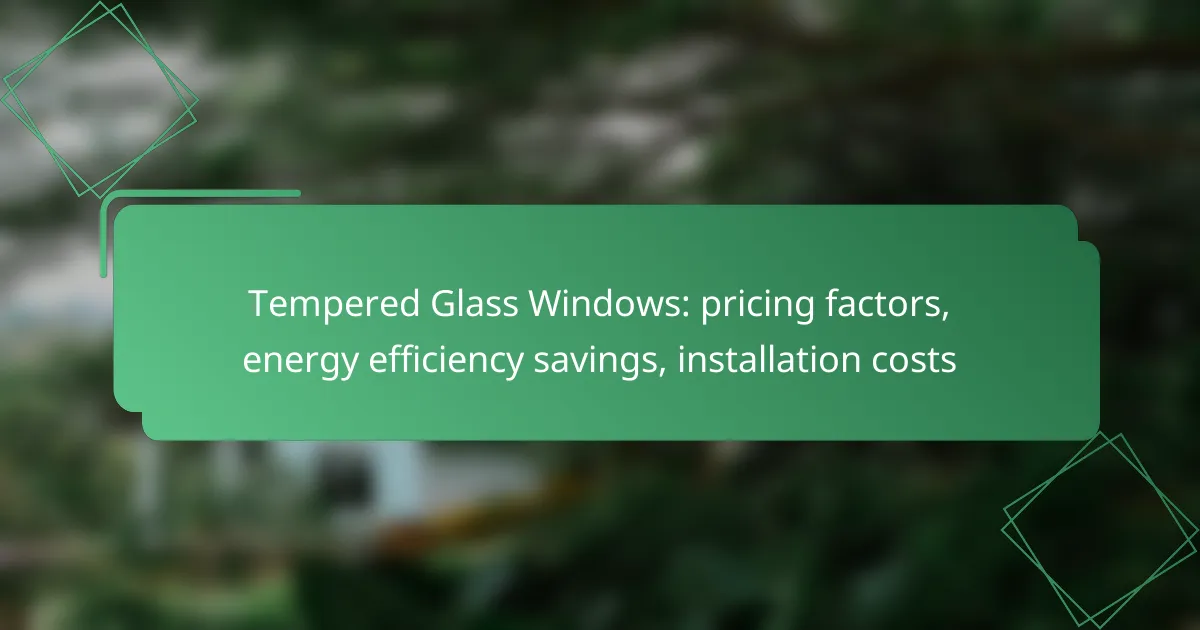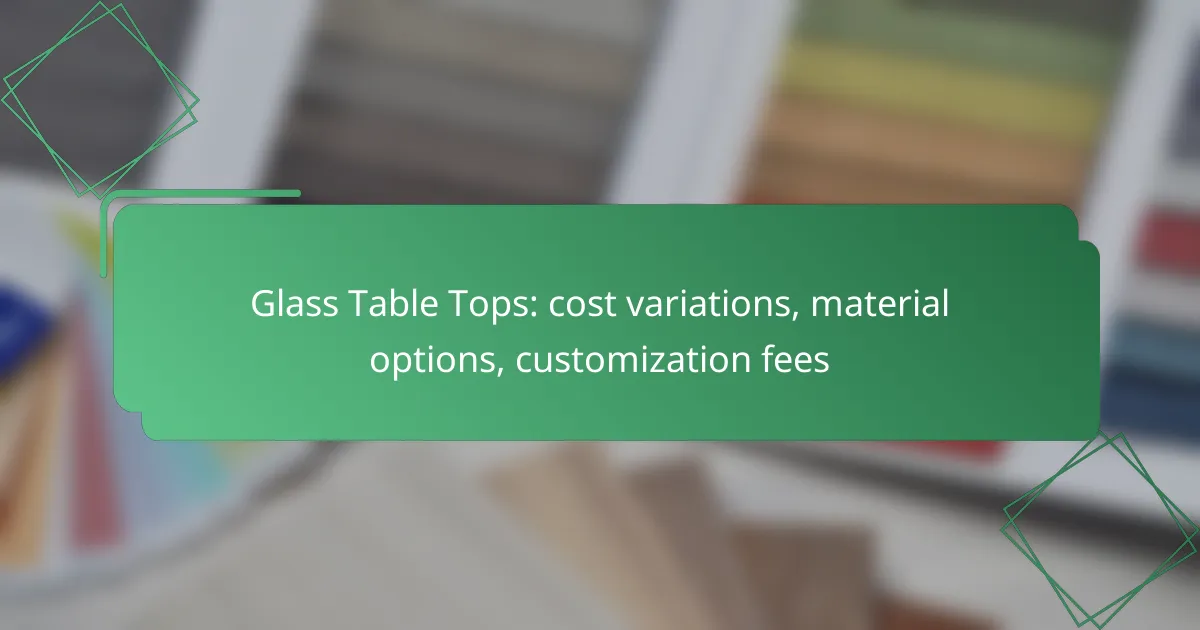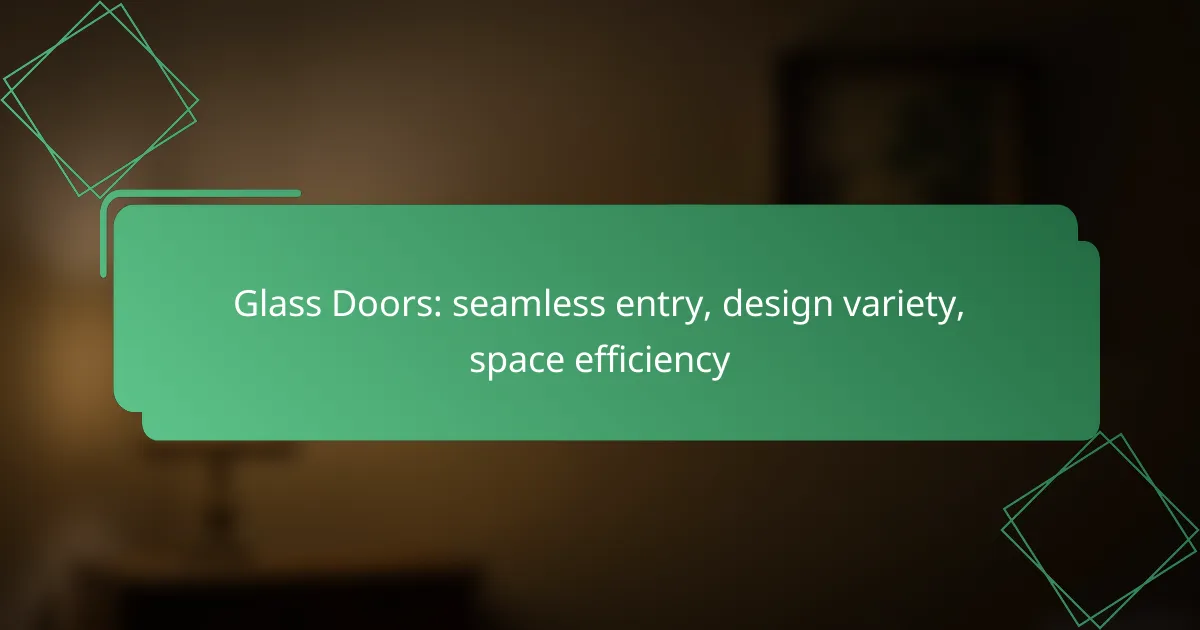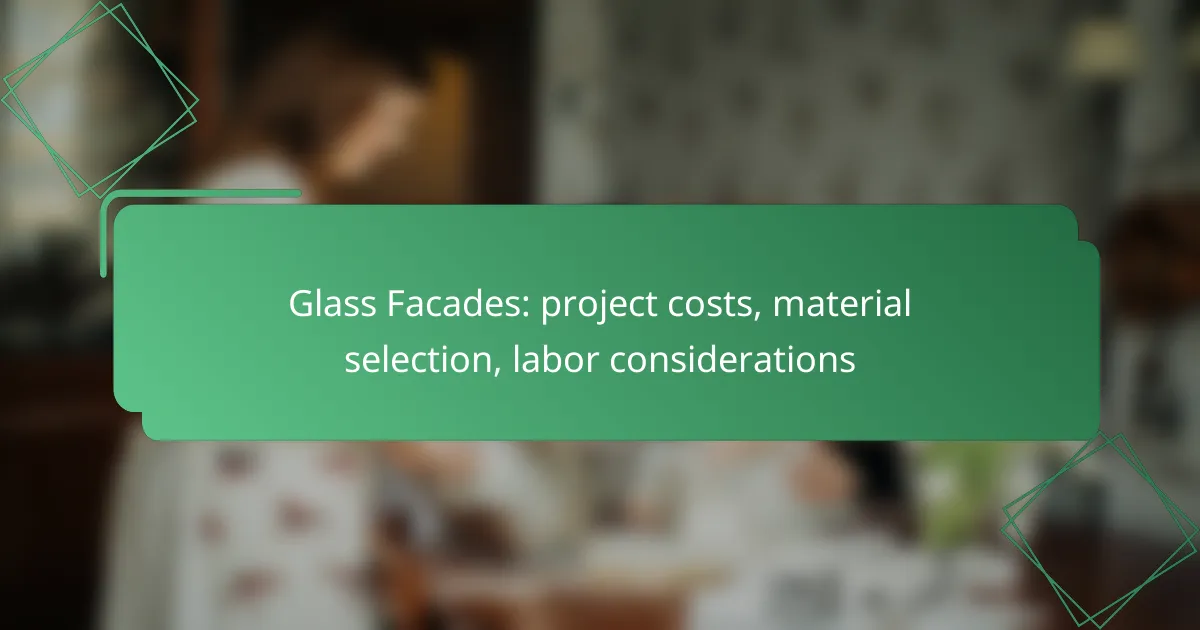Tempered glass windows offer a combination of durability and energy efficiency, making them a popular choice for homeowners. The pricing of these windows is influenced by factors such as material quality, size, and installation complexity, which can significantly affect overall costs. Additionally, their ability to minimize heat transfer can lead to substantial energy savings over time, making them a worthwhile investment for many households.
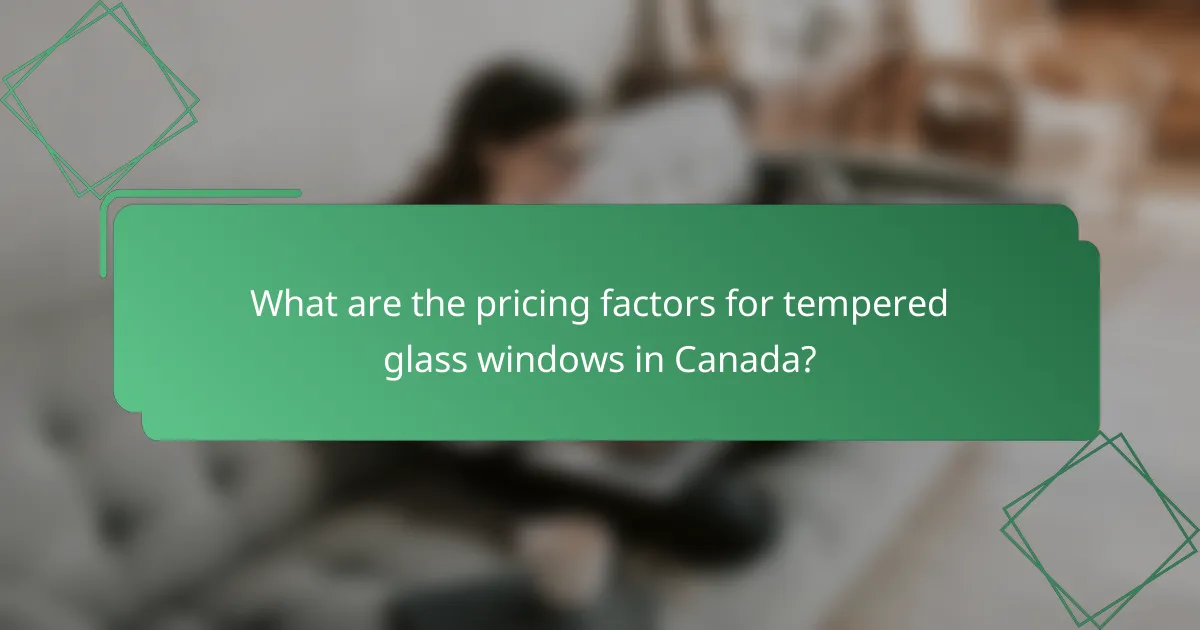
What are the pricing factors for tempered glass windows in Canada?
The pricing of tempered glass windows in Canada is influenced by several key factors, including material quality, window size, customization options, supplier location, and installation complexity. Understanding these elements can help homeowners make informed decisions and budget effectively for their projects.
Material quality
The quality of the tempered glass significantly affects the overall price. Higher-grade glass, which offers better durability and thermal performance, tends to cost more. Look for products that meet Canadian safety standards, as these may come with a premium but provide long-term savings through energy efficiency.
Additionally, consider the thickness of the glass. Thicker panes generally provide better insulation and resistance to impact, which can justify a higher initial investment.
Window size
Window size plays a crucial role in determining the cost of tempered glass windows. Standard sizes are typically more affordable due to mass production, while custom sizes can lead to increased prices. Measure your window openings accurately to avoid unexpected costs during installation.
For larger windows, the price per square foot may decrease, but the overall cost will still be higher due to the increased material and shipping expenses.
Customization options
Customization options, such as tinting, coatings, or special shapes, can add to the cost of tempered glass windows. While these features enhance aesthetics and energy efficiency, they also increase the price. Consider your specific needs and whether the additional features will provide a worthwhile return on investment.
For example, low-E coatings can improve energy efficiency by reflecting heat, potentially leading to savings on heating and cooling bills over time.
Supplier location
The location of the supplier can impact the pricing of tempered glass windows due to shipping costs and local market conditions. Suppliers closer to your area may offer lower shipping fees, while those from distant locations might add extra charges. Research local suppliers to find competitive pricing without compromising on quality.
Additionally, local regulations and building codes may influence the availability and pricing of certain tempered glass products, so be sure to check these factors when sourcing materials.
Installation complexity
The complexity of the installation process can significantly affect the overall cost of tempered glass windows. Simple replacements may require less labor and therefore cost less, while custom installations or those requiring structural modifications will likely be more expensive. Assess your current window frames and the level of work needed to ensure a proper fit.
Hiring experienced professionals can save you from costly mistakes, but be sure to obtain multiple quotes to find a fair price for the installation services. Always check references and reviews to ensure quality workmanship.
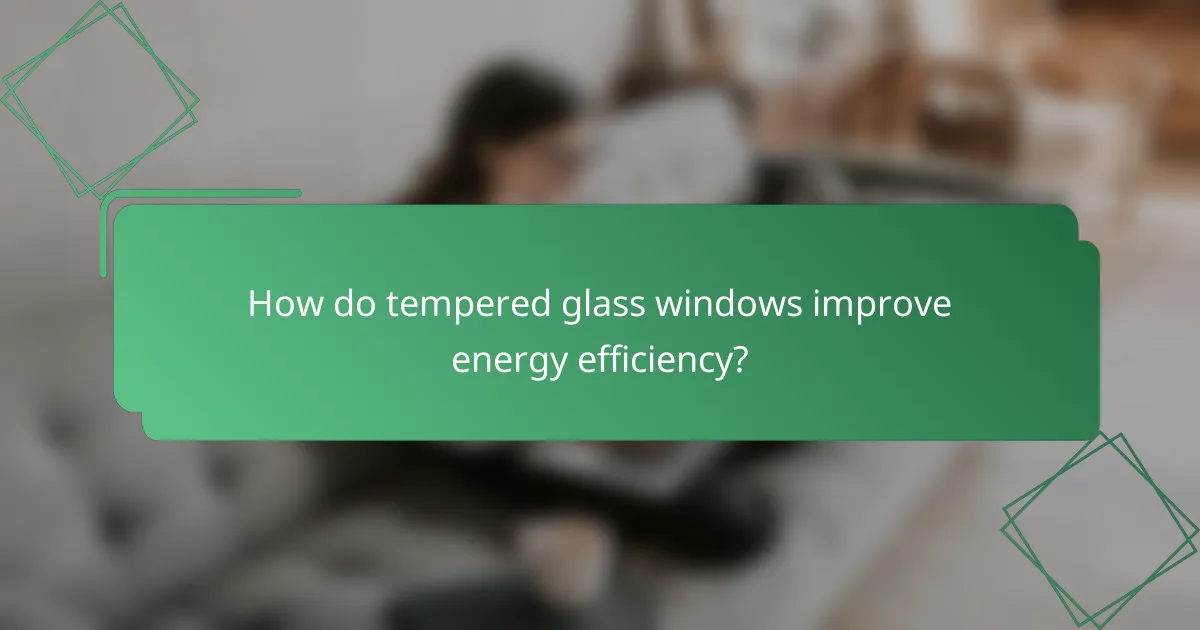
How do tempered glass windows improve energy efficiency?
Tempered glass windows enhance energy efficiency by minimizing heat transfer, which helps maintain a consistent indoor temperature. This results in reduced reliance on heating and cooling systems, leading to energy savings over time.
Reduced heat transfer
Tempered glass is designed to withstand higher temperatures and thermal stress, which makes it an effective barrier against heat transfer. This type of glass can significantly reduce the amount of heat that enters or escapes a building, especially in extreme weather conditions. By limiting heat exchange, tempered glass helps keep indoor spaces comfortable year-round.
In practical terms, using tempered glass can lower the temperature fluctuations inside your home, which is particularly beneficial in regions with hot summers or cold winters. This stability contributes to a more energy-efficient environment.
Lower energy bills
By improving energy efficiency, tempered glass windows can lead to lower energy bills. Homeowners may notice a decrease in heating and cooling costs, as the need for HVAC system usage diminishes. Over time, these savings can add up, making tempered glass a cost-effective investment.
For example, households may experience savings of around 10-30% on their energy bills, depending on local climate conditions and existing window types. This financial benefit makes tempered glass an attractive option for energy-conscious consumers.
Enhanced insulation
Tempered glass windows provide enhanced insulation compared to standard glass, thanks to their thicker construction and thermal resistance. This improved insulation helps maintain a stable indoor environment, reducing the workload on heating and cooling systems.
Additionally, many tempered glass windows are available with low-emissivity (Low-E) coatings, which further enhance their insulating properties. These coatings reflect heat while allowing natural light to enter, optimizing energy efficiency without sacrificing brightness.
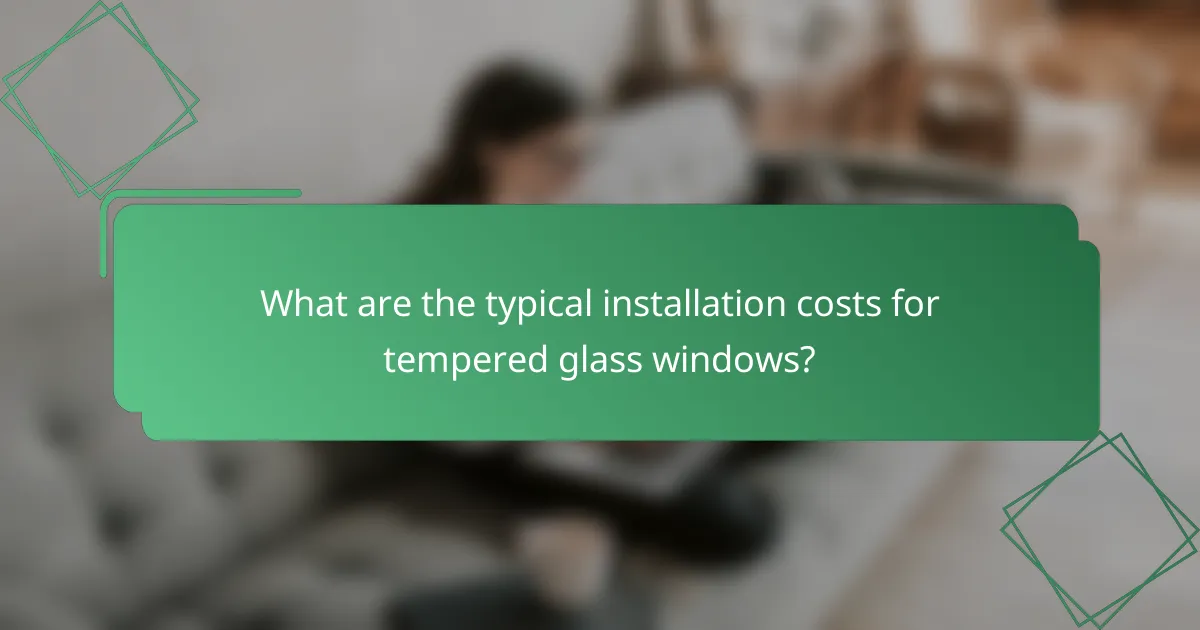
What are the typical installation costs for tempered glass windows?
The installation costs for tempered glass windows can vary significantly based on several factors, including labor rates, the complexity of the installation, and additional materials required. Generally, homeowners can expect to pay anywhere from a few hundred to over a thousand dollars per window, depending on these variables.
Labor costs in Canada
Labor costs for installing tempered glass windows in Canada typically range from CAD 50 to CAD 100 per hour. The total labor expense will depend on the number of windows being installed and the complexity of the job. For instance, installation in a multi-story building may incur higher labor fees due to safety measures and additional equipment needed.
Average installation fees
On average, installation fees for tempered glass windows can range from CAD 300 to CAD 1,500 per window. This price often includes both labor and basic materials. Factors such as window size, frame type, and any necessary modifications to the existing structure can influence the final cost.
Additional materials
Additional materials required for the installation of tempered glass windows may include framing, sealants, and insulation. These materials can add anywhere from CAD 100 to CAD 500 to the overall project cost. It’s essential to consider these extras when budgeting for your window installation to avoid unexpected expenses.
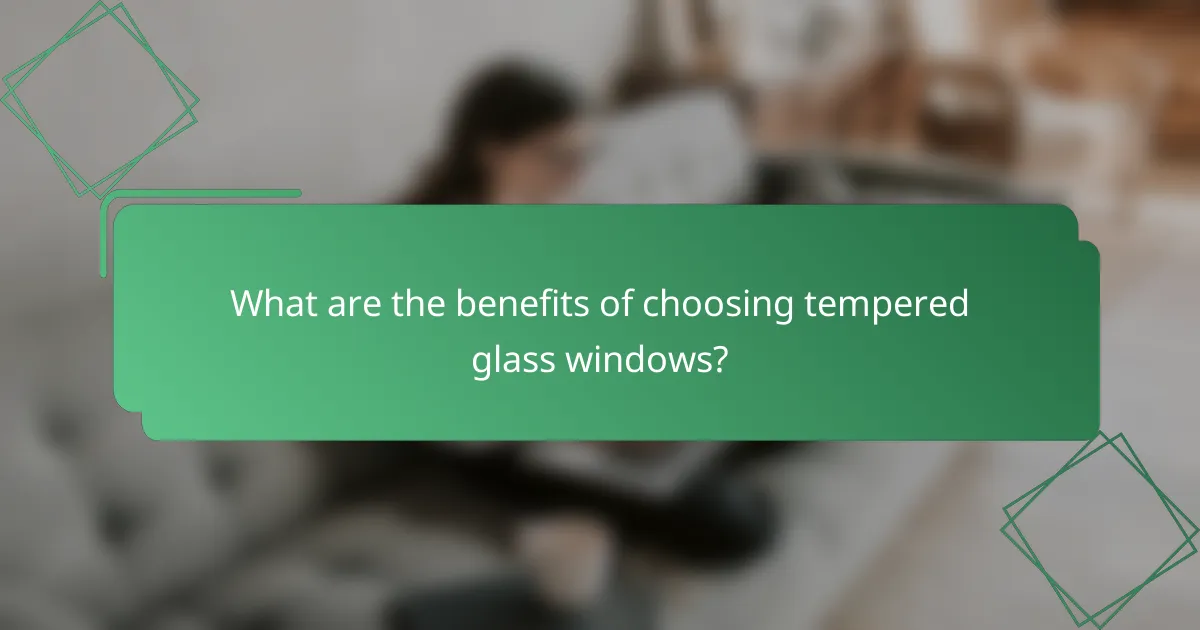
What are the benefits of choosing tempered glass windows?
Tempered glass windows offer significant advantages, including increased safety, enhanced durability, and improved aesthetics. These benefits make them a popular choice for both residential and commercial properties, providing long-lasting performance and visual appeal.
Increased safety
Tempered glass is much stronger than standard glass, making it less likely to shatter upon impact. If it does break, it fractures into small, blunt pieces rather than sharp shards, reducing the risk of injury.
For homes with children or pets, using tempered glass in windows and doors can provide peace of mind. Additionally, many building codes require tempered glass in specific areas, such as near swimming pools or in high-traffic locations.
Enhanced durability
Tempered glass is designed to withstand extreme temperature changes and high pressure, making it more durable than regular glass. This resilience helps prevent warping or cracking over time, especially in climates with significant temperature fluctuations.
Investing in tempered glass windows can lead to lower maintenance costs, as they are less prone to damage from weather conditions. This durability can also contribute to energy efficiency, as well-sealed windows help maintain indoor temperatures.
Improved aesthetics
Tempered glass windows provide a sleek, modern look that can enhance the overall appearance of a building. Their clarity and ability to be manufactured in various shapes and sizes allow for creative architectural designs.
Furthermore, the ability to incorporate tinted or reflective coatings can improve energy efficiency while adding visual interest. This versatility makes tempered glass a favored choice for both residential and commercial applications, contributing to a building’s curb appeal.
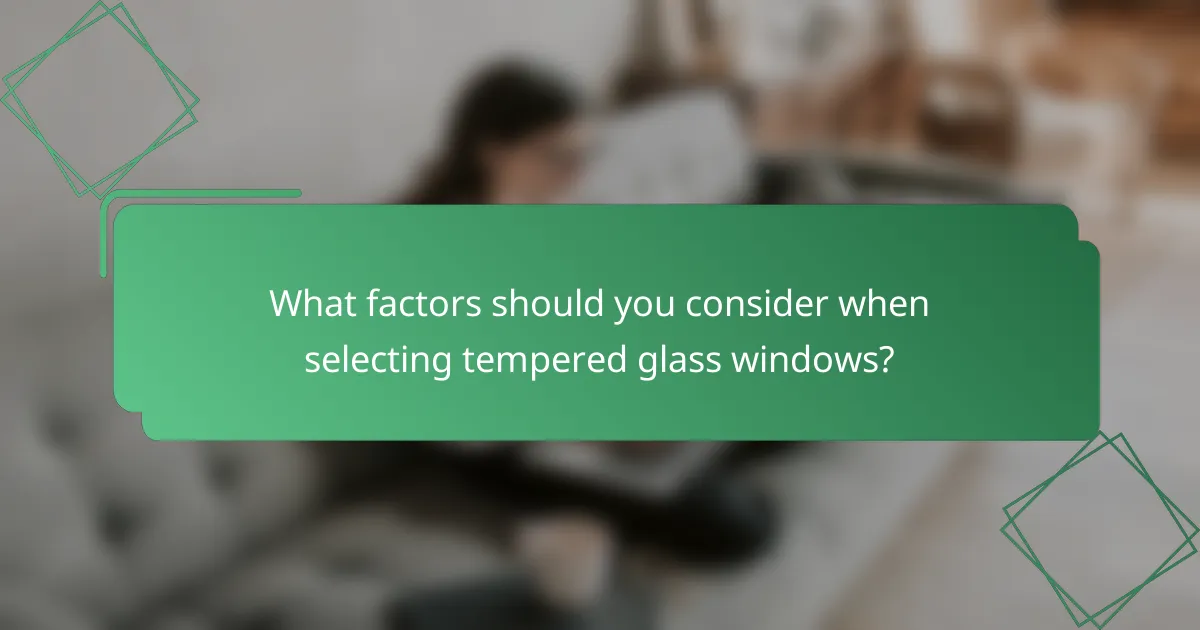
What factors should you consider when selecting tempered glass windows?
When selecting tempered glass windows, consider energy efficiency, warranty options, and installation costs. These factors significantly impact both the performance and long-term value of your windows.
Energy ratings
Energy ratings indicate how well tempered glass windows insulate against heat transfer, which can lead to energy savings. Look for windows with a high Energy Star rating, as they typically offer better thermal performance and can reduce heating and cooling costs by a notable percentage.
In general, windows with low U-values (below 0.30) and high Solar Heat Gain Coefficient (SHGC) ratings are preferable for energy efficiency. Depending on your climate, selecting the right combination can lead to substantial savings on energy bills over time.
Warranty options
Warranty options for tempered glass windows can vary widely among manufacturers. A good warranty typically covers defects in materials and workmanship for at least 10 years, while some premium brands may offer lifetime coverage.
When evaluating warranties, check for coverage details on seal failure, glass breakage, and frame materials. Understanding the warranty terms can help you avoid unexpected costs and ensure you are protected against potential issues with your windows.






